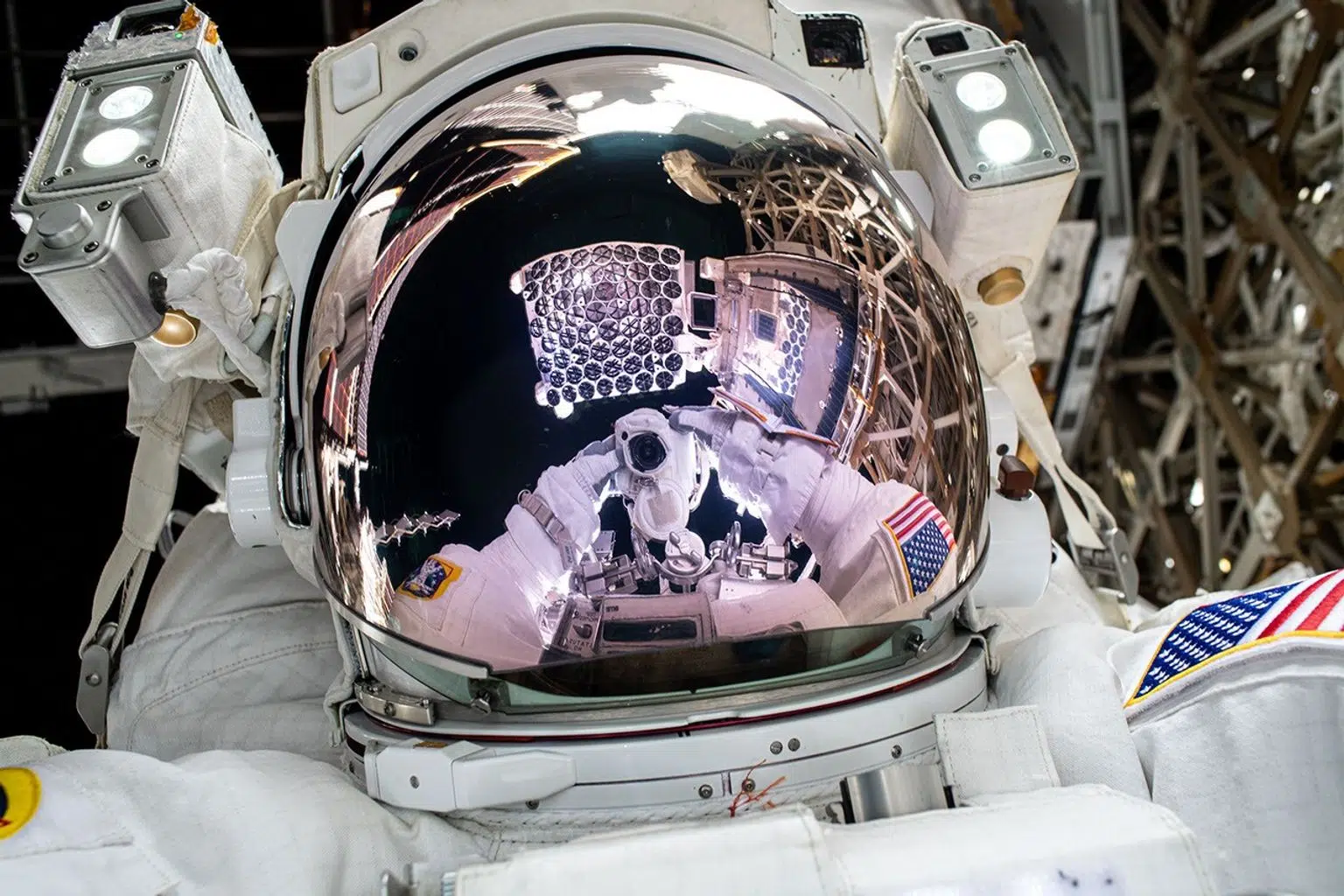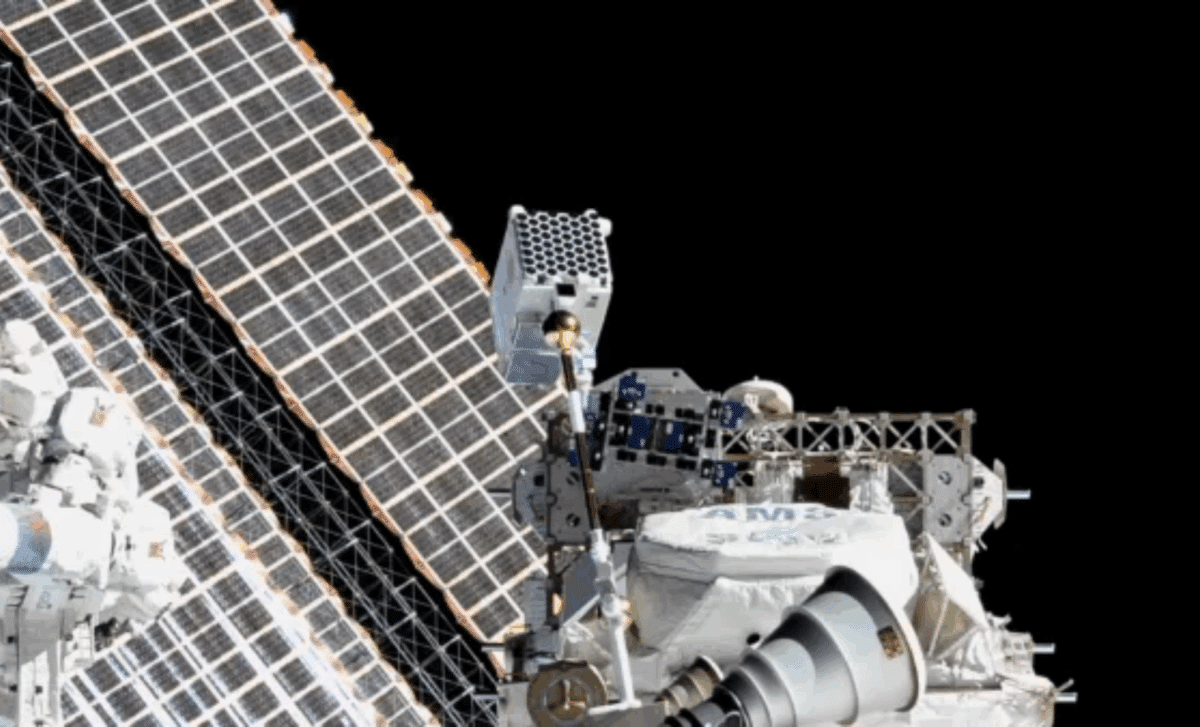NASA has paused operations of the Neutron Star Interior Composition Explorer (NICER) aboard the International Space Station (ISS) following a critical motor failure that halted its ability to track celestial targets. Installed in 2017, NICER has exceeded its planned 18-month mission by nearly eight years, delivering transformative insights into neutron stars and X-ray astronomy. Engineers are now assessing the issue while ensuring the telescope remains safe for the station and crew. Yet, even in standby mode, NICER’s scientific legacy continues to expand.
The Mission That Redefined X-Ray Astronomy
Mounted on the starboard truss of the ISS, NICER has been one of NASA’s most productive astrophysics instruments in low-Earth orbit. Designed to probe the ultradense interiors of neutron stars, it has delivered precision data on some of the most extreme environments in the universe. The telescope’s steering system—responsible for rotating its detectors to track targets—unexpectedly froze on June 17, 2025, forcing the mission team at NASA’s Goddard Space Flight Center (GSFC) to halt science operations.
The immediate cause, a malfunctioning pointing mechanism, has sparked an intricate troubleshooting process involving robotic camera inspections and diagnostic motion tests. While no timeline has been announced for resuming full operations, the mission’s data archive remains active, offering vast resources for ongoing astrophysical research.
NICER’s scientific reach extends far beyond stellar physics. It also served as the platform for the Station Explorer for X-ray Timing and Navigation Technology (SEXTANT) — a pioneering experiment proving that pulsar signals could be used as natural beacons for autonomous space navigation. This concept, detailed in the NASA Technical Report, achieved position estimates within ten kilometers, hinting at a future where spacecraft might traverse deep space without Earth-based radio support.
When Engineering Meets Human Spaceflight
NICER’s current challenge recalls earlier obstacles, particularly the 2023 light-shield tear that exposed its detectors to sunlight. That crisis was resolved through extraordinary teamwork between engineers and astronauts. On January 16, 2025, astronaut Nick Hague conducted a spacewalk to install nine thermal patches, guided by mission leader Keith Gendreau.
“It was awesome to watch the training sessions and be able to debrief with the astronauts afterward,” said Gendreau. Training for that spacewalk drew the astronomy and human spaceflight teams closer. The operation not only restored daytime capability but also provided a critical template for future in-orbit repairs — lessons now proving invaluable as engineers cautiously attempt to recover the telescope’s motion.
Each diagnostic step mirrors that earlier repair playbook: slow, deliberate, and well-instrumented testing to avoid worsening the situation. Engineers are currently exploring ways to place NICER into a secure stowed configuration should ISS operations demand clearance space.
 The NICER (Neutron star Interior Composition Explorer) X-ray telescope is reflected on NASA astronaut and Expedition 72 flight engineer Nick Hague’s spacesuit helmet visor in this high-flying “space-selfie” taken during a spacewalk on Jan. 16, 2025.
The NICER (Neutron star Interior Composition Explorer) X-ray telescope is reflected on NASA astronaut and Expedition 72 flight engineer Nick Hague’s spacesuit helmet visor in this high-flying “space-selfie” taken during a spacewalk on Jan. 16, 2025.
NASA/Nick Hague
A Legacy Written In Pulsars And Magnetars
Even as the telescope rests, NICER’s data continues to shape cutting-edge research in high-energy astrophysics. In 2020, during a burst storm from the magnetar SGR 1935+2154, NICER recorded over 217 X-ray bursts in just 1,120 seconds. These precise light curves now underpin models explaining how magnetic reconnection events twist and release immense energy.
The mission’s fast-slewing design and high photon throughput have allowed astronomers to capture transient events that last mere milliseconds — phenomena impossible to observe with most telescopes. This capability has deepened understanding of pulsars, accretion disks, and the equation of state for neutron-star matter.
Even if NICER never resumes full motion, scientists expect its archive — thousands of hours of observations of black holes, neutron stars, and transients — to remain a cornerstone of X-ray astrophysics for decades. Researchers are now mining these datasets to refine models of cosmic density, radiation, and space navigation using pulsar timing.
The Quiet Resilience Of A Space Telescope
For now, NICER sits silent but far from forgotten. NASA has redirected its focus to analyzing existing data while engineers test incremental recovery procedures. Whether the telescope reawakens or transitions into a passive data-only role, its scientific contributions have already altered the trajectory of X-ray astronomy.
From probing the densest matter known to the universe to demonstrating autonomous spacecraft navigation through pulsar signals, NICER stands as a symbol of ingenuity, persistence, and cross-disciplinary collaboration between engineers, astronauts, and astrophysicists. Its current silence is not an end — it’s the next chapter in a mission that has already outlived every expectation.

